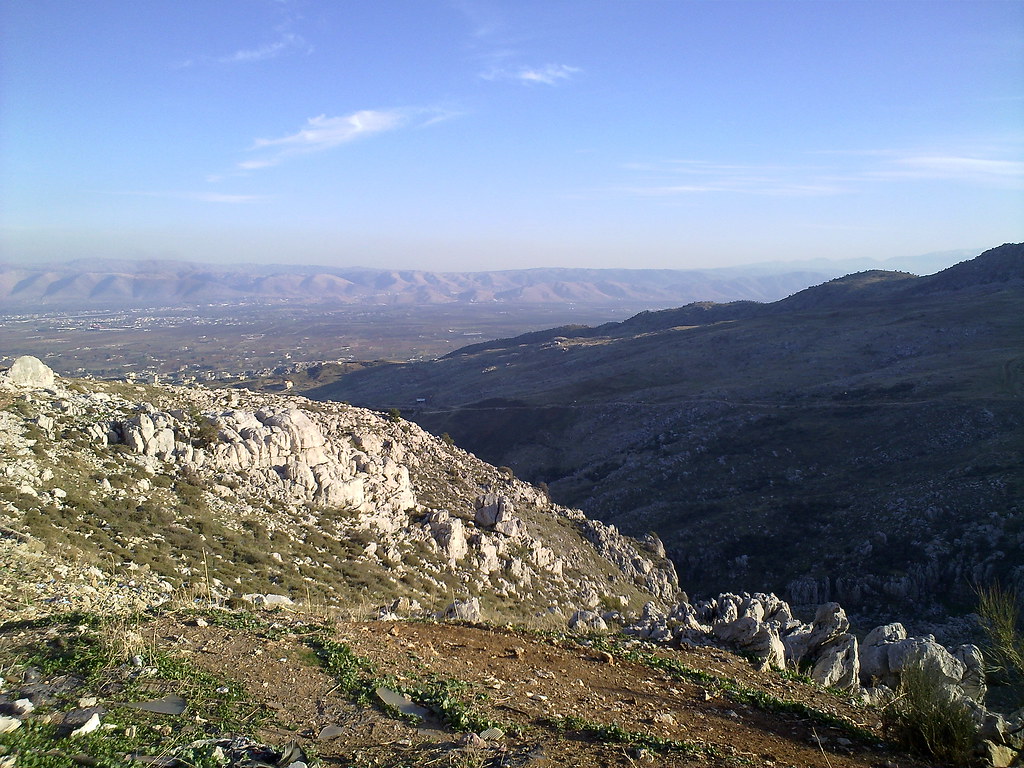Why are Anti-Lebanon Mountains So Prominent?
Unveiling the Magnificence: Exploring the Allure of the Anti-Lebanon Mountains
Anti-Lebanon Mountains

The Anti-Lebanon Mountains, with their striking beauty and imposing presence, stand as a natural wonder in the landscape of the Middle East. Stretching approximately 150 kilometers (93 miles) in a southwest-northeast direction, this mountain range forms a significant portion of the border between Syria and Lebanon. The crest of the range serves as a defining boundary between the two countries, with the majority of the mountains lying within Syrian territory. But what makes the Anti-Lebanon Mountains so prominent? This article delves into the geological, geographical, and cultural factors that contribute to their significance.
Geological Formation
Tectonic Activity
The Anti-Lebanon Mountains owe their formation to the complex processes of tectonic activity that have shaped the Earth’s crust over millions of years. The range is part of the larger system of the Levant Fault, which extends from southern Turkey through Lebanon and into Israel. This fault line marks the boundary between the African and Arabian tectonic plates, where the forces of plate tectonics have led to the uplifting and folding of the Earth’s crust.
Folded Structure
One of the most striking features of the Anti-Lebanon Mountains is their folded structure, characterized by parallel ridges and valleys that run along the length of the range. These folds, known as anticlines and synclines, were formed as a result of compression forces acting on the Earth’s crust. Over time, the layers of sedimentary rock were uplifted and deformed, creating the distinctive topography of the mountains.
Geographic Significance
Natural Boundary
The Anti-Lebanon Mountains serve as a natural boundary between Syria and Lebanon, defining much of the border between the two countries. The crest of the range marks the political divide, with each side of the mountains boasting its own unique landscape, culture, and history. This geographical feature has played a significant role in shaping the identity and geopolitics of the region.
Water Source
The Anti-Lebanon Mountains are also a vital source of water for the surrounding regions. Numerous rivers and streams originate in the mountains, providing crucial freshwater resources for agriculture, industry, and domestic use. The melting snows of Mount Hermon, the highest peak in the range, contribute to the flow of water throughout the year, sustaining ecosystems and human populations alike.
Cultural Importance
Historical Landmarks
Throughout history, the Anti-Lebanon Mountains have been home to various civilizations and cultures, leaving behind a rich tapestry of historical landmarks and archaeological sites. From ancient Roman temples to medieval castles and Ottoman-era villages, the mountains are replete with reminders of the region’s storied past. These cultural treasures attract visitors from around the world, contributing to the mountains’ prominence as a tourist destination. Just as we know Why are Alay Mountains So Prominent?
Religious Significance
The Anti-Lebanon Mountains hold religious significance for multiple faiths. Mount Hermon, the highest peak in the range, is mentioned in religious texts such as the Bible and the Quran. In Christian tradition, Mount Hermon is believed to be the site of the transfiguration of Jesus, while in Islamic tradition, it is associated with significant events and figures. Pilgrims and worshippers flock to the mountains to pay homage to these sacred sites, further enhancing their prominence.
Economic Impact
Tourism
The scenic beauty and cultural heritage of the Anti-Lebanon Mountains make them a popular destination for tourists and travelers. Visitors come to hike the mountain trails, explore ancient ruins, and immerse themselves in the local culture. Tourism provides a vital source of income for communities in the region, supporting businesses, hospitality services, and cultural preservation efforts.
Agriculture
The fertile valleys and foothills of the Anti-Lebanon Mountains support agriculture, including the cultivation of fruits, vegetables, and grains. The mild climate and ample water supply make the region ideal for farming, contributing to the local economy and food security. Agriculture remains a primary economic activity for many communities in the mountains.
Environmental Considerations
Biodiversity Hotspot
The Anti-Lebanon Mountains are home to a diverse range of plant and animal species, making them a biodiversity hotspot in the region. The mountains support unique ecosystems, including forests, grasslands, and wetlands, which provide habitat for numerous endemic and migratory species. Conservation efforts are essential for protecting this biodiversity and preserving the mountains’ ecological integrity.
Climate Regulation
The Anti-Lebanon Mountains play a crucial role in regulating the local climate. The elevation of the range influences weather patterns, precipitation levels, and temperature gradients, creating microclimates that support diverse habitats. Forests and vegetation in the mountains act as carbon sinks, helping to mitigate climate change and maintain ecological balance.
Conclusion
In conclusion, the prominence of the Anti-Lebanon Mountains stems from a combination of geological, geographical, cultural, and economic factors. As a natural boundary between Syria and Lebanon, a source of freshwater, and a hub of cultural and historical significance, the mountains hold a special place in the hearts and minds of people across the region and beyond. As we continue to explore and appreciate the wonders of the Anti-Lebanon, it is essential to recognize the need for sustainable management and conservation efforts to ensure their preservation for future generations.
Know More about Anti-Lebanon Mountains.
What Are The Tourist Places Nearest to Anti-Lebanon Mountains?
When Were Anti-Lebanon Mountains Formed?
Where Are Anti-Lebanon Mountains Located?
Who Discovered Anti-Lebanon Mountains?
How to Reach Anti-Lebanon Mountains?




